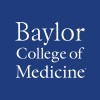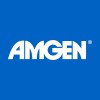
G-CSF Versus G-CSF Plus GM-CSF for Stem Cell Mobilization in NHL Patients
LymphomaPrimary Objectives: To determine the efficacy of in vivo purging achieved by rituximab in the two groups. To determine the number of apheresis procedures, total stem cell yield/kg patient body weight and the toxicity profile in the two groups. Secondary Objectives: To determine the degree of expression of various adhesion molecules in the 2 groups and correlate with time to engraftment of neutrophils, platelets, and red blood cells, efficacy of stem cell mobilization and purging. To determine the incidence of disease progression/relapse at 12 months in the two groups.

A Study to Investigate the Effects of Ketoconazole on LBH589 in Patients With Advanced Solid Tumors...
Non-Hodgkin LymphomaNeoplasmsThe primary purpose of this open-label study is to investigate the interaction of ketoconazole, a liver enzyme inhibitor, on oral LBH589 in adult patients with advanced solid tumors. The extension phase of the study will evaluate the safety and efficacy of LBH589 in patients with advanced solid tumors.

Autologous and Allogenic Transplantation With Campath-1H for T-Cell Lymphoma
LymphomaPrimary Objectives: To evaluate the role of autologous and allogenic stem cell transplantation with Campath-1H for patients with peripheral T-cell lymphoma (PTCL). To examine the impact of in-vivo purging with Campath -1H pre-autologous stem transplantation for patients with PTCL. To evaluate the impact of soluble CD52 upon in-vivo purging with Campath-1H. To evaluate the role of Campath -1H in the treatment minimal residual disease after autologous transplantation for PTCL.

Safety of Soluble Beta-Glucan (SBG) in Treatment of Patients With Non-Hodgkin's Lymphoma
Non-Hodgkin's LymphomaThe purpose of this study is to assess the safety of soluble beta-glucan (SBG) in combination with antibody and chemotherapy treatment in patients with non-Hodgkin-s lymphoma.

Pentostatin, Cyclophosphamide, and Rituximab in Treating Patients With Previously Untreated Chronic...
LeukemiaLymphomaRATIONALE: Pentostatin may stop the growth of cancer cells by blocking some of the enzymes needed for cell growth. Drugs used in chemotherapy, such as cyclophosphamide, work in different ways to stop the growth of cancer cells, either by killing the cells or by stopping them from dividing. Monoclonal antibodies, such as rituximab, can block cancer growth in different ways. Some block the ability of cancer cells to grow and spread. Others find cancer cells and help kill them or carry cancer-killing substances to them. Giving pentostatin together with cyclophosphamide and rituximab may kill more cancer cells. PURPOSE: This phase II trial is studying the side effects and how well giving pentostatin together with cyclophosphamide and rituximab works in treating patients with previously untreated chronic lymphocytic leukemia.

Low Dose IL-2, Hematopoietic Stem Cell Transplantation, IL2 for GVHD
Acute Lymphoblastic LeukemiaALL8 morePatients are being asked to participate in this study because treatment for their disease requires a stem cell transplant (SCT). Stem cells are the source of normal blood cells found in the bone marrow and lead to recovery of blood counts after bone marrow transplantation. With stem cell transplants, regardless of whether the donor is a full match to the patient or not, there is a risk of developing graft-versus-host disease (GVHD). GVHD is a serious and sometimes fatal side effect of SCT. GVHD occurs when the new donor stem cells (graft) recognizes that the body tissues of the patient (host) are different from those of the donor. When this happens, cells in the graft may attack the host organs. How much this happens and how severe the GVHD is depends on many things, including how different the donors cells are, the strength of the drugs given in preparation for the transplant, the quality of transplanted cells and the age of the person receiving the transplant. Typically, acute GVHD occurs in the first 100 days following transplant, while chronic GVHD occurs after day 100. Acute GVHD most often involves the skin, where it can cause anywhere from a mild rash to complete removal of skin; liver, where it can anywhere from a rise in liver function tests to liver failure; and the gut, where it can cause anywhere from mild diarrhea to profuse, life-threatening diarrhea. Most patients who develop GVHD experience a mild to moderate form, but some patients develop the severe, life-threatening form. Previous studies have shown that patients who receive SCT's can have a lower number of special T cells in their blood, called regulatory T cells, than people who have not received stem cell transplants. When regulatory T cells are low, there appears to be an increased rate of severe, acute GVHD. A drug known as IL-2 (Proleukin) has been shown to increase the number of regulatory T cells in patients following stem cell transplant, and in this study investigators plan to give low dose IL-2 after transplant. This study is called a phase II study because its major purpose is to find out whether using a low-dose of IL-2 will be effective in preventing acute GVHD. Other important purposes are to find out if this treatment helps the patient's immune system recover regulatory T cells faster after the transplant. This study will assess the safety and toxicity of low-dose IL-2 given to patients after transplantation and determine whether this drug is helpful in preventing GVHD.

Vaccine Therapy in Treating Patients With Recurrent B-Cell Lymphoma
LymphomaRATIONALE: Vaccines made from mouse DNA may help the body build an effective immune response to kill cancer cells. PURPOSE: This phase I trial is studying the side effects and best dose of mouse DNA vaccine in treating patients with recurrent B-cell lymphoma.

AMG-479 in Treating Patients With Advanced Solid Tumors or Non-Hodgkin Lymphoma
LymphomaProstate Cancer4 moreRATIONALE: Monoclonal antibodies, such as AMG-479, can block cancer growth in different ways. Some block the ability of cancer cells to grow and spread. Others find cancer cells and help kill them or carry cancer-killing substances to them. PURPOSE: This phase I trial is studying the side effects and best dose of AMG-479 in treating patients with advanced solid tumors or non-Hodgkin lymphoma.

Ph I/II Study of Subcutaneously Administered Veltuzumab (hA20) in NHL and CLL
NHLLymphoma34 moreThe purpose of this study is to determine if a subcutaneous (SC) dosing schedule of veltuzumab can be established in NHL or CLL patients and to confirm the safety and efficacy of veltuzumab that was previously established when administered intravenously.

Rituximab and Involved Field Radiotherapy in Early Stage Follicular Lymphoma
LymphomaMalignantCombination of involved field radiotherapy for the control of macroscopic disease and CD20 antibody Rituximab for the control of microscopic remainders in other regions in patients with early stage nodal follicular lymphoma /grade I or II). Evaluation of DFSl and toxicity.
